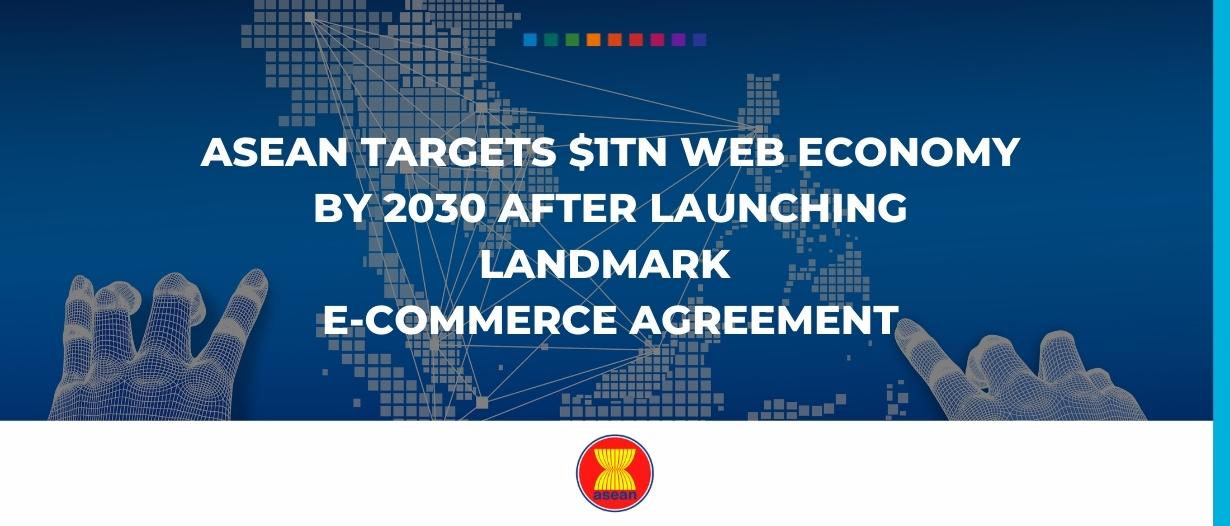The Association of Southeast Asian Nations (ASEAN) has launched a landmark trade agreement that could see the region’s web economy grow to $1 trillion by 2030.
Last week, following its ratification by Indonesia, the ASEAN Agreement on Electronic Commerce came into force, in a move that will transform e-commerce between ASEAN’s 10 member states.
Known as the E-Commerce Agreement, the deal establishes common principles and rules to promote the growth of e-commerce in the region, and to strengthen capacity to implement them.
In an official statement, ASEAN said the agreement – which was originally signed in 2019 – will serve as a pathfinder for modern rules on e-commerce transactions in the region, and will pave the way towards a regionally integrated digital economy.
The path to $1 trillion
Since the outbreak of the pandemic, Southeast Asia’s e-commerce sector has grown significantly, and has become a major driving force not only of the region’s digital transformation, but also of its post-pandemic economic recovery.
Last month, a report by Singapore’s state-backed Temasek Holdings and global business consultancy Bain & Company found that ASEAN is on track to have a $1 trillion internet economy by 2030.
According to the report, ASEAN’s internet economy is estimated to reach $170 billion in gross merchandise value by the end of 2021, and more than $360 billion by 2025, outpacing an earlier projection of $300 billion.
By 2030, the report notes, ASEAN’s internet economy should surpass $1 trillion in gross merchandise value.
Driven by an emerging base of younger, tech-savvy digital consumers and merchants, Southeast Asia’s innovation and investment in areas such as e-commerce, ride-hailing, and food delivery have changed the nature of business in the region, and have produced 35 unicorns, according to a 2021 study by Credit Suisse.
Just last week, for example, Southeast Asia’s leading super app, Grab, went public on the Nasdaq, as part of the largest ever special purpose acquisition company (SPAC) deal outside of the US.
The move thus created Alimeter Growth Corp. (AGC), the SPAC that will be listed on the Nasdaq, and also raised $4.5 billion in new funding for Grab.
???? We’d like to #Grab your attention to welcome @GrabNewsroom to the @Nasdaq family!
— Nasdaq (@Nasdaq) December 2, 2021
$GRAB provides everyday services such as mobility, deliveries, and digital financial services through a single “everyday everything” app. ???????? #NasdaqListed pic.twitter.com/s5ZsXkx9FG
Founded as a ride-hailing service in Kuala Lumpur, Malaysia, Grab’s rise to power illustrates ASEAN’s growing importance in the global tech and web economy.
Since its founding, Grab has evolved into one of the world’s largest technology companies, offering not only food delivery but also mobile payments, fintech, telemedicine, and more.
With a market cap of $40 billion, Grab was among the Nasdaq’s largest initial public offerings (IPOs) of 2021, alongside US crypto exchange Coinbase and US electric vehicle maker Rivian.
Speaking at a ceremony in Singapore, where Grab is now headquartered, to celebrate the IPO, the company’s co-founder and CEO, Anthony Tan, said: “We truly believe this is Southeast Asia’s time to shine, and we hope that our entrance into the global public market will help bring greater attention to the tremendous opportunity here in the region.
“Our calling remains the same – to unlock greater opportunity for all Southeast Asians to participate in the digital economy.”

































